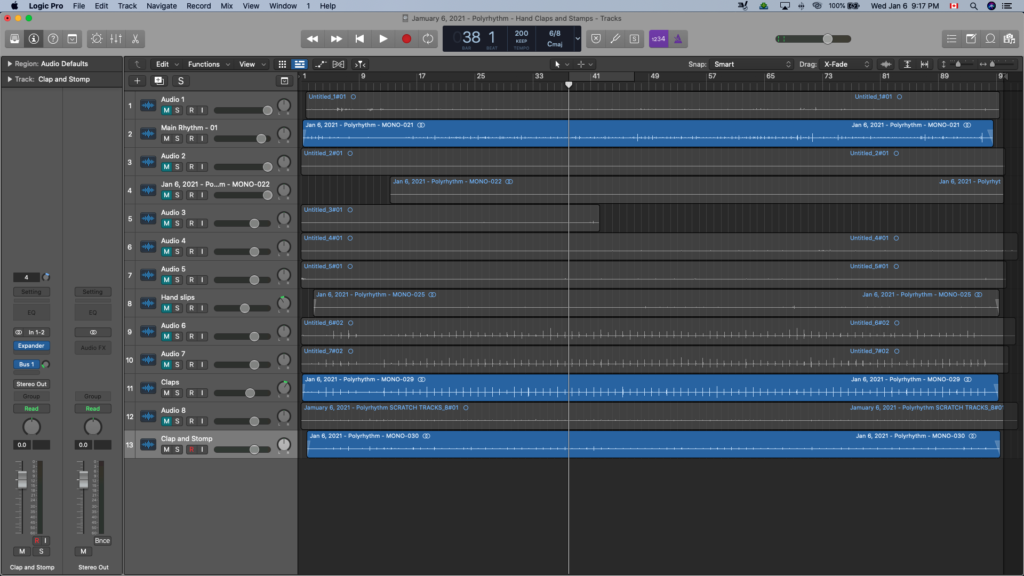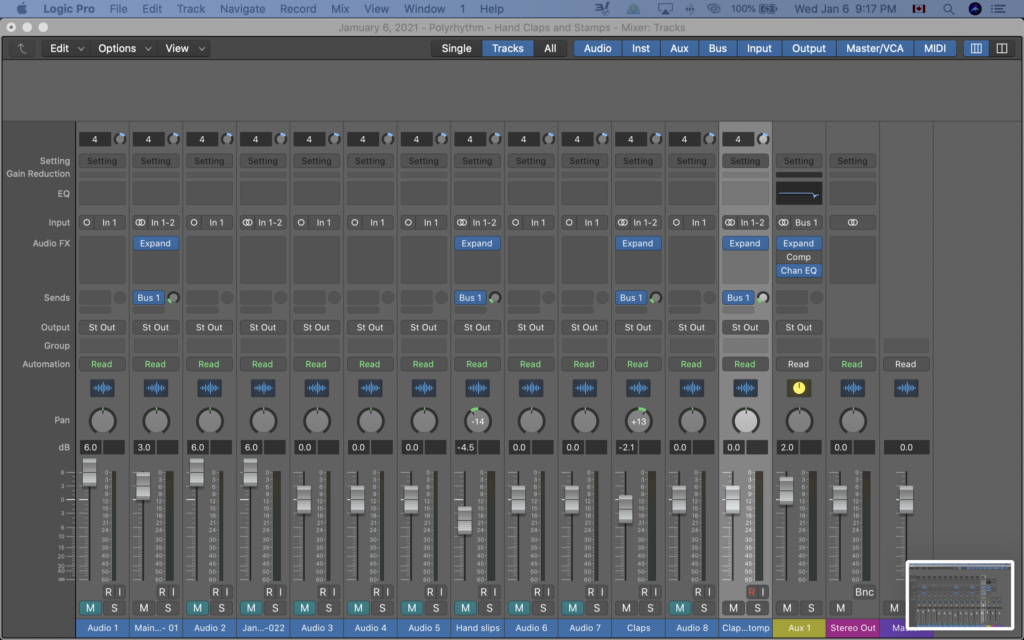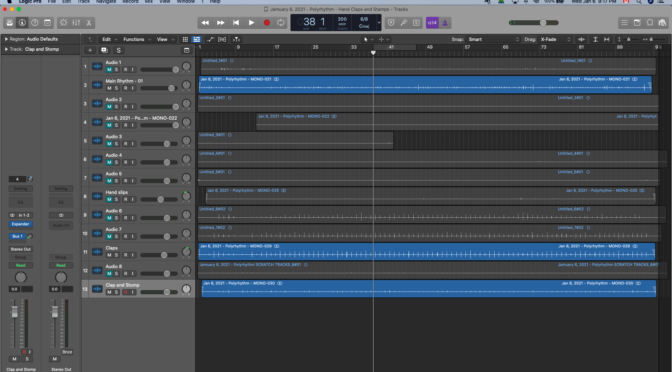Another simple, straight-forward, use-what-I-have-and-know, beat, this one is titled “Hands Claps and Stamps” because that’s what makes up the track.
I feel like I’m cheating a little bit on this track (again) because it’s very similar to the very first track I did on January 1. Further, years ago I recorded an album’s worth of djembe music that I never released. It was one of those projects that I kept meaning to get around to learning how to do post-production and yet, here we are, many years later, and it’s still not out. (Maybe that will be Finish February’s project?) The reason I say that is because the rhythm you hear in this track is basically a copy of some of those rhythms.
This rhythm is nothing new and is simply a recording of a mostly traditional, West African pattern that anybody who listens once or twice will be able to mimic. Or at least I think they could.
As I state in the very beginning of the track, I set the metronome to 6/8 at 200 BPM. I was going to record free style, given my set up, I decided to use the metronome. And I still couldn’t keep time!
You’ll hear me drop the time keeping towards the end of the track, something I notice I do because I start thinking about variations I could do or, even worse, how I should end the song. Further, the more takes I do the more I have to remind myself to “keep it simple” because, if I don’t, then I start overthinking or trying to force an idea that doesn’t fit with the rest of the track.
Now, I could’ve fixed that mistake very simply had I kept with the metronome for all of the tracks and only used the main rhythm as a guide. I decided to keep it “live off the floor” rather than stuck to a metronome and the result is, well, I won’t shy away from it, a bit of muddiness in the track. It’s almost enough to throw you off but since the hands claps are a bit louder and keep a consistent rhythm, the track isn’t too far off. It just sounds like the soloist messed up. And that was me.
You might also question if this is a true polyrhythm, and I did think of a few other ideas. At first I was going to use the most basic form of polyrhythm that most people are aware of, even if they don’t actually know it’s a polyrhythm: the Latin American 3:2 clave.
Say whaa?
bah bah bah __ babah
Try tapping that out.
Can’t get it? Have a listen:
One of the most notable representations of this rhythm is on the clave block or, if you need a bit more volume, the cow bell. I’ve got a fever, and I need more cow bell!
A lot of African tribal music, West African in particular, has a lot of polyrhythms all over the place, wherein in any one drum ensemble there might be three or four or more drummers all playing separate rhythms but all keeping in time and at the same tempo. There is no other reason why West African music makes your heart start pumping and urges you to dance. It’s a very moving type of music.
And so the polyrhythm here consists of a base rhythm played on my lap:
Followed by what I call “hand slips” or “hand slides”:
Then the hands claps:
And then rounded off with what amounts to a doubling of the main rhythm and the claps using my hands on my lap and my foot on the floor:
As for effects, I applied the Expander plugin to all of the tracks individually and then routed each track to a bus to apply additional expansion and EQ. I was going to put some compression on there but, as I’ve found while audio editing, every time I put compression on a track I seem to get a headache and I figure if I’m getting a headache from it then other people might too.
The solution? Use the volume knobs.
What does compression do? It basically “squishes” the audio so it’s more even. To put it another way, it’ll make loud sounds quieter and quiet sounds louder. It’s also a topic of debate amongst sound engineers and audiophiles the world over. They can debate it, I won’t. It gives me a headache.

 And so that’s that for today’s track. Again, I feel like I cheated a little bit because it’s a rhythm I’ve used for years but I’ve never recorded in this way. The main challenge here was to get it done within a certain time period and make sure it sounded “clean”, ie, no elevator noises or chair squeaks from recording in my apartment. I certainly have other ideas for polyrhythms but though that if I merely plunked them into a MIDI instrument then that would be overly simple, and I may not know how to make that as musical as I can my hands and feet.
And so that’s that for today’s track. Again, I feel like I cheated a little bit because it’s a rhythm I’ve used for years but I’ve never recorded in this way. The main challenge here was to get it done within a certain time period and make sure it sounded “clean”, ie, no elevator noises or chair squeaks from recording in my apartment. I certainly have other ideas for polyrhythms but though that if I merely plunked them into a MIDI instrument then that would be overly simple, and I may not know how to make that as musical as I can my hands and feet.
With that, I hope you enjoy playing along! 🙂
